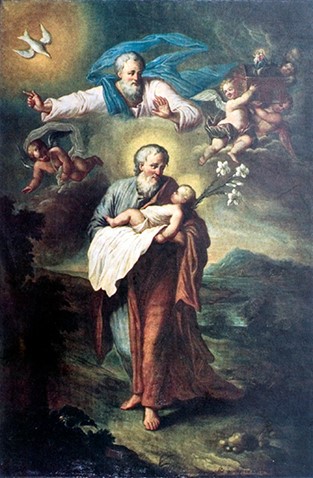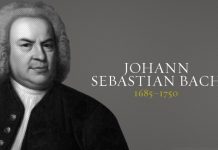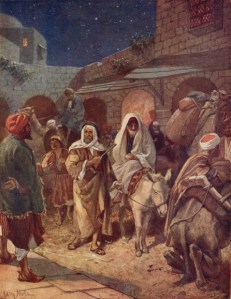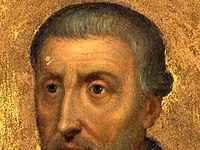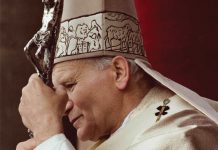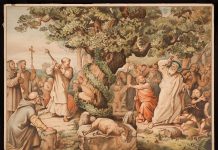On this second anniversary of the publication of Patris Corde, one year after the conclusion of the Year of Saint Joseph and on the one hundred fiftieth anniversary of the proclamation of Saint Joseph as the Patron of the Universal Church, let us consider the significance of Patris Corde. Patris Corde is the Apostolic Letter that was published by Pope Francis at the outset of the Year of Saint Joseph on December 8, 2020. Not only did the publication of this letter signify the beginning of the Year of Saint Joseph, but it also sought to clarify the question of Saint Joseph’s fatherhood. In particular, Patris Corde provides a very historic clarification on the nature of Saint Joseph’s paternity, not only for the field of Josephology and for Josephologists everywhere, but also for the entire Catholic Church and all her members.
This historic teaching on the nature of Saint Joseph’s fatherhood is found four times throughout Patris Corde, and this doctrine about Joseph’s paternity is something that is founded in the tradition of the Church, which now has made its way into official papal teaching by its presence in Patris Corde. This Josephite doctrine is known as Saint Joseph the Image of God the Father, and I will present in this article: 1) what this Josephite doctrine means; 2) how this doctrine is present in Patris Corde; 3) why this Josephite doctrine in Patris Corde is officially taught by the Papal Magisterium — i.e., by the Church — and what the binding status of this Josephite doctrine is; 4) why the appearance of this Josephite doctrine in Patris Corde is significant for Catholics, for the whole world, and for our times.
First, it is necessary to give a definition for this Josephite doctrine. What does it mean to say that Saint Joseph is the Image of God the Father? Essentially, what this Josephite teaching means is that Saint Joseph for Jesus Christ represented or reflected God the Father’s Paternity or Fatherhood, viz., that whenever Jesus Christ the God-Man looked at his virginal father Joseph, the Son of God saw in His human mind and in His human imagination the Person of God His Heavenly Father reflected in the person of Saint Joseph,[1] as an image in the mirror reflects or represents the person in the mirror. Hence, Saint Joseph is the Image of God the Father by reflecting the Fatherhood of God for Jesus Christ.
Second, this Josephite doctrine is present in Patris Corde not just once, but actually four times. What follows will be a presentation and explanation of the relevant parts of Patris Corde which present this Josephite teaching.
First, Patris Corde, section two: “In Joseph, Jesus saw the tender love of God: ‘As a father has compassion for his children, so the Lord has compassion for those who fear him’ (Ps 103:13).”[2] Saint Paul in his second letter to the Corinthians appropriates the quality of mercy to God the Father by calling Him “the Father of Mercies,”[3] and hence this means that mercy is something proper to God the Father. Now, the English translation of the Latin word that is used in section two of Patris Corde — viz., “miserationem” — is rendered by the phrase “the tender love.” This is a poor translation, because miserationem in Latin actually means “mercy,” and hence a better translation of this phrase would be “in Joseph, Jesus saw the mercy of God.” Further, due to the appropriation of “mercy” to God the Father in 2 Corinthians 1:3 by the Apostle Saint Paul, this means that when Jesus is looking at Joseph, He in His human mind and in His human imagination is seeing God’s mercy in a paternal sense, viz., in how mercy is embodied in God the Father. Therefore, since the Josephite teaching which teaches that Saint Joseph is the Image of God the Father means that when Jesus saw his father Joseph, Christ saw God the Father reflected or represented in Joseph, and since Francis is saying in Patris Corde that “in Joseph, Jesus saw the mercy of God” — mercy being a property that Saint Paul appropriates to God the Father in 2 Corinthians 1:3 by calling God the Father “the Father of Mercies” — all of this taken together means that Francis is teaching us in section two of Patris Corde that Saint Joseph is the Image of God the Father.
Second, Patris Corde, section four: “I like to think that it was from Saint Joseph that Jesus drew inspiration for the parable of the prodigal son and the merciful father (cf. Lk 15:11-32).”[4] Here, we have another manifestation of Francis teaching that Saint Joseph is the Image of God the Father. Since Francis is saying that “it was from Saint Joseph that Jesus drew inspiration for the Parable of the Prodigal Son and the Merciful Father,” this means that Jesus is using Saint Joseph as a pattern, reflection, or image for Him to look at in order to think about God the Father, because in this parable of the prodigal son and the merciful father, the merciful father represents God the Father. Hence, this means that Francis is teaching Catholics in section four of Patris Corde that Joseph is the Image of God the Father because Joseph through the character of the merciful father is representing or reflecting God the Father’s Paternity or Fatherhood for Jesus Christ in His human mind and in His human imagination.
Third, Patris Corde, section seven: “In his relationship to Jesus, Joseph was the earthly shadow of the heavenly Father.”[5] Despite the use of a different word here in this section, viz., the word of “shadow” instead of “image,” Francis in this sentence from section seven of Patris Corde is still teaching that Saint Joseph is the Image of God the Father for two reasons: 1) Image of God the Father and Shadow of God the Father are synonymous titles for describing the same Josephite doctrine, viz., Joseph the Image of God the Father,[6] just as saying that Mary co-redeemed with Christ and that Mary co-operated with Christ in the work of Redemption are synonymous ways of describing the same Marian doctrine, viz., Mary the Co-redemptrix.[7] This is because the reality of an image and the reality of a shadow function in the same way. For both images and shadows point to or signify something other than themselves, viz., the thing which makes the image or the shadow. Thus, whether one calls Saint Joseph “the Image of God the Father” or “the Shadow of God the Father,” both of these titles or expressions are signifying the same reality, viz., that Saint Joseph pointed to or signified something else — rather, Someone else — other than himself by reflecting or representing that Someone, and that Someone is the Person of God the Father in His Paternity or Fatherhood; 2) since Francis specifies that it is in Saint Joseph’s relationship to Jesus that Joseph is “the earthly shadow of the heavenly Father” when our current pontiff writes that “[i]n his relationship to Jesus, Joseph was the earthly shadow of the heavenly Father,” this means that in His relationship with Saint Joseph, when Jesus looked at His earthly father, Christ saw the Person of God the Father represented by Joseph, as a shadow represents the person who casts the shadow. Hence, Francis is teaching us in section seven of Patris Corde that Saint Joseph is the Image of God the Father for Jesus by saying that “[i]n his relationship to Jesus, Joseph was the earthly shadow of the heavenly Father.”
Lastly, again, Patris Corde, section seven: “In every exercise of our fatherhood, we should always keep in mind that it has nothing to do with possession, but is rather a ‘sign’ pointing to a greater fatherhood. In a way, we are all like Joseph: a shadow of the heavenly Father, who ‘makes his sun rise on the evil and on the good, and sends rain on the just and on the unjust’ (Mt 5:45).”[8] Francis is again teaching here in section seven of Patris Corde that Saint Joseph is the Image of God the Father for two reasons: 1) Francis again describes Saint Joseph as the “shadow of the heavenly Father” when he writes that “we [viz., all fathers] are all like Joseph: a shadow of the heavenly Father,” and — as I said above — the titles “Joseph the Image of God the Father” and “Joseph the Shadow of God the Father” are synonymous titles because they use different or similar titles to refer to the same reality, viz., that Saint Joseph reflected or represented the Person of God the Father in His Paternity or Fatherhood, and this is because an image and a shadow do the same thing, viz. they point to or signify something other than themselves, as Joseph points to or signifies Someone — viz., God the Father — other than himself. Thus, by calling Saint Joseph “shadow of the heavenly Father,” Francis is repeating his papal teaching that Saint Joseph is the Image of God the Father; 2) Francis articulates here in Patris Corde what I explained above about what both an image and a shadow have in common, viz., that the function of both an image and a shadow is to point to or to signify something other than themselves, when he writes that “every exercise of our fatherhood…is rather a ‘sign’ pointing to a greater fatherhood.” For because Francis is referring to both earthly fathers and spiritual fathers — including himself — when he talks about their fatherhood being an “exercise of our fatherhood” and when he says that “[i]n a way, we are all like Joseph: a shadow of the heavenly Father,” and because he says that our fatherhood is “a ‘sign’ pointing to a greater fatherhood” — viz., God the Father’s Fatherhood — this means that Francis is making a connection between what it means to be a father — be it the fatherhood of natural or earthly fathers or the fatherhood of priests, bishops, and popes — being “a ‘sign’ pointing to a greater fatherhood” — i.e., pointing to or signifying something else — and between the title “shadow of the heavenly Father.” This connection is that what it means to be a father is to be both “a ‘sign’ pointing to a greater fatherhood,” i.e., to point to or signify God’s Fatherhood, and to be “a shadow of the heavenly Father”; in other words, being a father, being “a ‘sign’ pointing to a greater fatherhood,” and being the “shadow of the heavenly Father” are one and the same thing. Further, since to be the image of God the Father also means to be “a ‘sign’ pointing to a greater fatherhood” — i.e., to point to or to signify God the Father’s Paternity — and since to be the shadow of God the Father also means to be “a ‘sign’ pointing to a greater fatherhood,” therefore, from this one must conclude that being the image of God the Father and being the shadow God the Father are identical with one another, being the same thing due to the fact that they perform the same function, i.e., being “a ‘sign’ pointing to a greater fatherhood,” or pointing to or signifying God’s Fatherhood. In other words, being a father, being “a ‘sign’ pointing to a greater fatherhood,” being the “shadow of the heavenly Father,” and being the image of God the Father are all one and the same thing. Therefore, one must conclude from what was said above in this paragraph that because Francis is teaching that Joseph is the “shadow of the heavenly Father,” this means that Francis is also teaching that Joseph is the Image of God the Father. Hence, one must conclude that Francis teaches four times — once in section two, once in section four, and twice in section seven — in Patris Corde that Saint Joseph is the Image of God the Father.
Third, it is necessary to address why Saint Joseph the Image of God the Father is officially taught by the Papal Magisterium — i.e., by the Church — in Patris Corde, and what the binding status of this Josephite doctrine is. Pope Saint Paul VI outlines in Lumen Gentium the following: 1) what the proper response is to a doctrine concerning Faith or morals taught by the Papal Magisterium which is neither dogmatically defined nor taught definitively; 2) the criteria for assenting to this type of doctrine. First, Paul VI teaches in Lumen Gentium that the proper response to a doctrine concerning Faith or morals taught by the Papal Magisterium which is neither dogmatically defined nor taught definitively is the response called “religious submission of mind and will.”[9] This essentially means that out of obedience to the Church a Catholic is bound to accept such a doctrine; a Catholic does not commit heresy nor a mortal sin by rejecting such a doctrine, and the censure that a proposition which rejects such a doctrine would merit the censure of an “erroneous” proposition,[10] while the rejection of a Catholic dogma would be heretical and mortally sinful to deny,[11] whereas the rejection of a definitive Catholic doctrine would only be mortally sinful.[12] Hence, the binding status for accepting such a doctrine is indicated by the censure, viz., an erroneous proposition. Second, the criteria for assenting to this type of doctrine which is not dogmatically defined nor definitively taught by the Church are threefold: 1) “the character of the documents”[13]; 2) the Pope’s “frequent repetition of the same doctrine”[14]; 3) the Pope’s “manner of speaking.”[15] Only the presence of one of these criteria in the teaching of a Catholic doctrine by the Papal Magisterium suffices to require or compel religious submission of mind and will on the part of all Catholics for a doctrine which is not dogmatically defined nor definitively taught by the pope.
Now, let us examine Francis’ teaching about Saint Joseph the Image of God the Father in Patris Corde to see if this Josephite doctrine is something that requires religious submission of mind and will. First, the first criterion which Lumen Gentium states, viz., the character of the documents. Since Patris Corde is an Apostolic Letter, and since an Apostolic Letter is one of the three types of formal papal teaching documents, the other two being the Papal Encyclical — which is higher in authority than the Apostolic Letter — and the Apostolic or Dogmatic Constitution — which has the highest authority of any formal papal teaching document — this means that the character of this document Patris Corde is that of a formal papal teaching document. This means that whatever is written in this document concerning Faith or morals is written with the intention of teaching a truth or truths of the Catholic Faith, and thus whatever is taught concerning Faith or morals in such an Apostolic Letter has the weight of authentic Papal Magisterium behind it, and thus this means that whatever is taught in an Apostolic Letter is officially taught by the Church. Now this Josephite doctrine of Saint Joseph the Image of God the Father is a truth concerning the Catholic Faith because it concerns the person of Saint Joseph, which means that this Josephite teaching is a matter of Faith, and since — as was shown above — Francis teaches four times in the Apostolic Letter Patris Corde that Saint Joseph is the Image of God the Father,[16] this means that due to the character of the document Patris Corde, Saint Joseph the Image of God the Father is a Catholic doctrine which requires religious submission of mind and will from all Catholics and is erroneous to reject because this Josephite doctrine is officially taught by the Papal Magisterium.
Next, the second criterion which Lumen Gentium states, viz., the Pope’s frequent repetition of the same doctrine. As said various times above, Francis teaches that Saint Joseph is the Image of God the Father four times in Patris Corde, once in section two,[17] once in section four,[18] and twice in section seven, even using the same title in section seven, viz., Joseph “the shadow of the heavenly Father.”[19] Hence, Francis is frequently repeating — since he teaches this Josephite doctrine four times — the same doctrine of Joseph the Image of God the Father, and since this Josephite teaching is a matter of Faith, one must conclude that from Pope Francis’ frequent repetition of the same doctrine that Saint Joseph the Image of God the Father is a Catholic doctrine which requires religious submission of mind and will from all Catholics and is erroneous to reject because this Josephite doctrine is officially taught by the Papal Magisterium.
Lastly, the third criterion which Lumen Gentium states, viz., the Pope’s manner of speaking. This third criterion applies to the statements made by Pope Francis in sections four and seven of Patris Corde. The English translation does not capture this mode of speaking in section four, but it does in section seven, because in both of these sections when one reads the Latin, he sees that when Francis teaches that Saint Joseph is the Image of God the Father, he uses the first-person plural form of the verbs in these sections,[20] which in English would be translated with the pronoun “we.” This is a key observation, because in papal documents, whenever the popes teach a doctrine concerning Faith or morals using their papal authority, they always use the first-person plural form of the verb.[21] Hence, the use of the first-person plural form of the verb to teach a doctrine of Faith or morals is this third criterion of the Pope’s manner of speaking presented in Lumen Gentium. Thus, since Francis uses the first-person plural form of the verb in sections four and seven of Patris Corde to teach that Saint Joseph is the Image of God the Father, this means that by his manner of speaking Francis is teaching this Josephite doctrine by using his Papal Magisterium. Hence, it is necessary to conclude from this third criterion of the Pope’s manner of speaking that Francis is teaching that Saint Joseph the Image of God the Father is a Catholic doctrine which requires religious submission of mind and will from all Catholics and is erroneous to reject because this Josephite doctrine is officially taught by the Papal Magisterium.
Therefore, while the presence of only one of these three criteria with the teaching of this Josephite doctrine would be sufficient to necessitate the acceptance of this teaching with religious submission of mind and will, the presence of all three of these criteria with the teaching of this doctrine in Patris Corde gives even greater weight of papal authority and even stronger binding force for the acceptance of this Josephite teaching, necessitating that Saint Joseph the Image of God the Father is a Catholic doctrine which requires religious submission of mind and will from Catholics and is erroneous to reject because this Josephite doctrine is officially taught by the Papal Magisterium. Given the appearance of this doctrine in Patris Corde, this means that the titles which refer to Joseph as “the Shadow of God the Father” or “the Image of God the Father” are not “exaggerated expressions” which Catholics “must beware of using” as Lépicier maintains,[22] but rather the use of either of these two titles to describe Saint Joseph’s paternity or fatherhood is official Catholic doctrine which must be adhered to with “religious submission of mind and will,” and on the contrary we must beware of not using these titles on account of an internal resistance to using them because it is erroneous to do so.
Lastly, I will discuss why the appearance of this Josephite doctrine in Patris Corde is significant for Catholics, for the whole world, and for our times. The date of publication for Patris Corde is the key to understanding this significance. Patris Corde was published on December 8, 2020, which is the one hundred fiftieth anniversary of the Proclamation of Saint Joseph as the Patron of the Universal Church, which in turn took place on December 8, 1870. To understand the significance of this date, one must also understand the circumstances surrounding the Proclamation of Saint Joseph as the Patron of the Universal Church. The time period in which this proclamation occurred was a time of great crisis for the Church; there were various external forces attacking the Church and the Pope, seeking the ruin of both.[23] During this time there were also petitions made by the laity, by priests and bishops, by members and superiors of religious orders, and even by many cardinals asking Pius IX to proclaim Saint Joseph the Patron of the Universal Church.[24] Pius IX did so on December 8, 1870, and very significantly historians have noted that after this proclamation about Saint Joseph was made, this proclamation caused the attacks on the Church and on the Papacy to cease and also caused a newfound respect for not only the Church but also for the Papacy.[25] The same was true for the dogmatic definition of the Immaculate Conception on December 8, 1854; the Church was also in a period of great crisis during this time, and when this Marian dogma was defined after petitions were made by members of the Church, the attacks on the Church and on Pius IX also ceased. Thus, it seems that the publication of Patris Corde on December 8, 2020 — which officially taught for the first time in history that Saint Joseph is the Image of God the Father, and which is the same date that both Saint Joseph was proclaimed Patron of the Universal Church and that the Immaculate Conception was dogmatically defined — is the Holy Spirit using this date of publication to tell Catholics the following: When it is dogmatically defined that Saint Joseph is the Image of God the Father, then all of the present attacks which the Church and the Holy Father Pope Francis are enduring will cease, there will be peace in the world, and a newfound respect for the Church and for the Papacy will be seen because of the dogmatic definition of this great Josephite truth, as was the case with the dogmatic definition of the Immaculate Conception and with the proclamation of Saint Joseph as the Patron of the Universal Church. In order for this to happen, the members of the Church — from the layman to the Cardinal — must do the following three things: 1) ask the Pope for the dogmatic definition of this Josephite doctrine by petitioning him as the members of the Church did for the proclamation of Saint Joseph as the Patron of the Universal Church and for the dogmatic definition of the Immaculate Conception; 2) pray to Saint Joseph for the realization of the dogmatic definition of this reality about him; 3) talk to others about this great reality of Saint Joseph and its presence in Patris Corde, and encourage others to petition the Pope for the dogmatic definition of this Josephite doctrine and pray for the realization of this dogmatic definition. If these things are done, if all Catholics Ite ad Joseph or Go to Joseph as the Egyptians did in the book of Genesis to Joseph the Patriarch,[26] then we may indeed be one step closer to the imminent coming of the Age of Peace, where Joseph with his son Jesus Christ and with his wife Mary will bring that promised Age of Peace to the whole world by extending the kingdom of Christ and of His Mother the Catholic Church over the whole Earth,[27] and Joseph the Image of God the Father will feed all nations throughout the whole Earth with the Bread of Life, the Manna which came down from Heaven,[28] in the Restoration of Christendom — as Joseph the Patriarch fed all nations throughout the whole Earth with the grains of wheat from Pharaoh’s barns during the famine in the book of Genesis.[29]
Ite ad Joseph!!!
[1] Alexis Henri M. Cardinal Lépicier, O.S.M., Saint Joseph, Époux de la Très Sainte Vierge: Traité Théologique (Paris: P. Lethelleux, 1932), http://jouzourouna.org/wp-content/uploads/2016/07/Saint-Joseph-Epoux-de-la-Tres-Sainte-Vierge-par-Cardinal-Lepicier-1932.pdf and https://livres-mystiques.com/partieTEXTES/Lepicier/StJoseph.html, 3.6.6: “De son côté, saint Ambroise voit, dans le fait que le père temporel de Jésus-Christ était un charpentier, une image de son Père éternel. [For his part, Saint Ambrose sees, in the fact that the temporal father of Jesus Christ was a carpenter, an image of his eternal Father.]”; Saint Ambrose, Expositio Evangelii secundum Lucam, in Patrologia Latina, ed. J.P. Migne (1845), https://patristica.net/latina/, PLn. 15, Lib. III, n. 2 (1589): “[N]on alienum etiam videtur ut qua ratione fabrum patrem habuerit, declaremus. Hoc enim typo eum patrem sibi esse demonstrat qui fabricator omnium condidit mundum. [It also seems not unsuitable that we declare by what reason that [Jesus] had a carpenter-father. For by this type [God the Father] shows that this father [viz., Joseph] is for Him/that this father [viz., Joseph] represents Him, Who built the world as the maker of all things.”; Father Joseph Patrignani, S.J., A Manual of Practical Devotion to the Glorious Patriarch St. Joseph (Charlotte: TAN Books, 1982), 2: “[Jesus] saw in this holy patriarch [viz., in Saint Joseph] the representative of the Eternal Father.”; Père Binet, S.J., The Divine Favors Granted to St. Joseph, trans. M.C.E. from the edition of the Rev. Fr. Jennesseaux, S.J. (Charlotte: TAN Books, 1983), 45: “[W]hen God the Father said to Jesus: ‘My son, behold Joseph; he will be your father,’ it is as if He said, ‘Joseph is for you, another Myself.’”; Edward Healy Thompson, M.A., The Life and Glories of Saint Joseph: Husband of Mary, Foster-Father of Jesus, and Patron of the Universal Church (Charlotte: TAN Books, 1888), 11: “[Joseph] was made the very representative of the Divine Father.”; Ibid., 130: “St. Joseph, as putative father of Our Lord, represents to us (as we have seen) the Person of the Eternal Father, the ‘Ancient of Days.’”; Maria Cecilia Baij, O.S.B., The Life of Saint Joseph, notes translated from the Italian of the Sac. Dr. Peter Bergamaschi, by Alba Rigoni, Ph.D. (New Jersey: The 101 Foundation, Inc., 1996), 395n. 3: “In the eyes of Jesus, the paternity of Joseph is a mirror for the divine paternity; it reflects the Father’s authority, imperturbable serenity, immensity, and sweetness.”; Mark I. Miravalle, STD, Meet Your Spiritual Father: A Brief Introduction to St. Joseph (Stockbridge: Marian Press, 2015), 22-23: “No single human who has ever lived comprises a better ‘icon’ of the perfect Fatherhood of God than the husband of Mary and virginal father of Jesus: St. Joseph.”; St. John Eudes, “Praises of St. Joseph,” quoted in Donald H. Calloway, MIC, Consecration to St. Joseph: The Wonders of Our Spiritual Father (Stockbridge: Marian Press, 2020), 244: “Hail Joseph, image of God the Father.”; Mark Miravalle, “Mariology Without Apology – 17. Our Lady of America: Present Status Analysis,” Mother of All Peoples, November 23, 2021, https://www.youtube.com/watch?v=Qv0xR00kpGU, 33:28-33:32: “[Joseph] was the Image of God the Father to Jesus!”; Msgr. Arthur B. Calkins, “St. Joseph in the Church since 1917 – Msgr. Calkins, Fatima Centennial Conference – October 7, 2017,” franciscanfriars, October 10, 2018, https://www.youtube.com/watch?v=2rAJaFIly2I, 17:38-18:00: “As the authors of the French School of Theology would often emphasize in the seventeenth century in the sixteen hundreds, he [viz., Joseph] is the Reflection of God’s Fatherhood; on earth, he [viz., Joseph] takes the place of the Eternal Father.”; “St. Joseph: Patron of the Triumph of Mary’s Immaculate Heart,” Sensus Fidelium, September 20, 2015, https://www.youtube.com/watch?v=eu-DVXd7PtU, 16:40-16:47; “Lenten Mission on St. Joseph: Patron of An Age of Peace,” Sensus Fidelium, May 21, 2020, https://www.youtube.com/watch?v=r9jdgBpI17A, 12:50-12:57; “Lenten Mission on St. Joseph: Joseph and the End Times,” Sensus Fidelium, May 22, 2020, https://www.youtube.com/watch?v=U5t_uGBgts0, 22:40-22:48.”
[2] Francis, Patris Corde, Libreria Editrice Vaticana, December 8, 2020, https://www.vatican.va/content/francesco/en/apost_letters/documents/papa-francesco-lettera-ap_20201208_patris-corde.html, sec. 2: “In Ioseph Iesus vidit miserationem Dei: «Quomodo miseretur pater filiorum, misertus est Dominus timentibus se» (Ps 103,13).”
[3] 2 Corinthians 1:3, emphasis in bold is mine: “Εὐλογητὸς ὁ Θεὸς καὶ Πατὴρ τοῦ Κυρίου ἡμῶν Ἰησοῦ Χριστοῦ, ὁ Πατὴρ τῶν οἰκτιρμῶν. [Blessed [be] the God and Father of our Lord Jesus Christ, the Father of Mercies.]”
[4] Francis, Patris Corde, sec. 4: “Volumus opinari ex Ioseph moribus Iesum hausisse inceptum parabolae de filio prodigo patreque misericordi (cfr Lc 15, 11-32).”
[5] Ibid., sec. 7: “[Ioseph] erga Iesum in terra erat umbra Patris Caelestis.”
[6] Lépicier, Saint Joseph, Époux de la Très Sainte Vierge: Traité Théologique, 2.6.14: “Encore moins devrait-on dire de saint Joseph qu’il était sur la terre le représentant, le tenant-lieu de Dieu le Père, son ombre créée, son image vénérable. [Still less should one say of Saint Joseph that he was on earth the representative, the substitute of God the Father, his created shadow, his venerable image.]” This negative statement from Cardinal Lépicier will be addressed later in this article. For now, it is only necessary to note that because Lépicier is listing the terms describing Saint Joseph as the “created shadow” of God the Father or the “venerable image” of God the Father together in this quotation from his treatise in Josephology, this means that to describe Saint Joseph as the “Shadow of God the Father” or the “Image of God the Father” is to use similar or slightly different expressions to describe the same Josephite doctrine, viz., that Saint Joseph reflected or represented the Person of God the Father in His Paternity or Fatherhood, and hence this means that the titles “Saint Joseph the Shadow of God the Father” and “Saint Joseph the Image of God the Father” are synonymous titles; “Lenten Mission on St. Joseph: Joseph and the End Times,” Sensus Fidelium, May 22, 2020, https://www.youtube.com/watch?v=U5t_uGBgts0, 22:40-22:48; Maria Cecilia Baij, O.S.B., The Life of Saint Joseph, notes translated from the Italian of the Sac. Dr. Peter Bergamaschi, by Alba Rigoni, Ph.D. (New Jersey: The 101 Foundation, Inc., 1996), 395n. 3. Since all three of these sources cited above use the expressions “Image of God the Father,” “Icon of God the Father,” and “Shadow of God the Father” to refer to the same Josephite doctrine, viz., Saint Joseph the Image of God the Father, this means that all three of these titles are synonymous titles for describing the same Josephite doctrine.
[7] Mark Miravalle, “Mariology Without Apology – 11. Mary Co-redemptrix IS Doctrine: Interview with Dr. Robert Fastiggi,” Mother of All Peoples, October 15, 2021, https://www.youtube.com/watch?v=CgF50IH_w14, 42:58- 43:56.
[8] Francis, Patris Corde, sec. 7: “Quotiescumque paternitatem exercemus, semper nobis memorandum est numquam hoc possessionis exercitationem constituere, sed ‘signum’ quod ad paternitatem altiorem adducit. Quodammodo omnes semper in condicione Ioseph sumus: umbra unius Patris caelestis, qui «solem suum oriri facit super malos et bonos et pluit super iustos et iniustos» (Mt 5,45).”
[9] Paul VI, Lumen Gentium, Libreria Editrice Vaticana, November 21, 1964, https://www.vatican.va/archive/hist_councils/ii_vatican_council/documents/vat-ii_const_19641121_lumen-gentium_en.html, sec. 25: “Hoc vero religiosum voluntatis et intellectus obsequium singulari ratione praestandum est Romani Pontificis authentico magisterio etiam cum non ex cathedra loquitur. [This religious submission of mind and will must be shown in a special way to the authentic magisterium of the Roman Pontiff, even when he is not speaking ex cathedra.]”
[10] Joseph Card. Ratzinger, Prefect, and Tarcisio Bertone, S.D.B., Archbishop Emeritus of Vercelli and Secretary, “Doctrinal Commentary on the Concluding Formula of the Professio fidei,” Congregation for the Doctrine of the Faith, Libreria Editrice Vaticana, June 29, 1998, https://www.vatican.va/roman_curia/congregations/cfaith/documents/rc_con_cfaith_doc_1998_professio-fidei_en.html, sec. 10: “The third proposition of the Professio fidei states: ‘Moreover, I adhere with religious submission of will and intellect to the teachings which either the Roman Pontiff or the College of Bishops enunciate when they exercise their authentic Magisterium, even if they do not intend to proclaim these teachings by a definitive act’. To this paragraph belong all those teachings – on faith and morals – presented as true or at least as sure, even if they have not been defined with a solemn judgement or proposed as definitive by the ordinary and universal Magisterium. Such teachings are, however, an authentic expression of the ordinary Magisterium of the Roman Pontiff or of the College of Bishops and therefore require religious submission of will and intellect.18 They are set forth in order to arrive at a deeper understanding of revelation, or to recall the conformity of a teaching with the truths of faith, or lastly to warn against ideas incompatible with those truths or against dangerous opinions that can lead to error.19 A proposition contrary to these doctrines can be qualified as erroneous or, in the case of teachings of the prudential order, as rash or dangerous and therefore ‘tuto doceri non potest’.20”
[11] Ibid., sec. 5: “The first paragraph states: ‘With firm faith, I also believe everything contained in the word of God, whether written or handed down in Tradition, which the Church, either by a solemn judgement or by the ordinary and universal Magisterium, sets forth to be believed as divinely revealed’. The object taught in this paragraph is constituted by all those doctrines of divine and catholic faith which the Church proposes as divinely and formally revealed and, as such, as irreformable.11 These doctrines are contained in the word of God, written or handed down, and defined with a solemn judgement as divinely revealed truths either by the Roman Pontiff when he speaks ‘ex cathedra,’ or by the College of Bishops gathered in council, or infallibly proposed for belief by the ordinary and universal Magisterium. These doctrines require the assent of theological faith by all members of the faithful. Thus, whoever obstinately places them in doubt or denies them falls under the censure of heresy, as indicated by the respective canons of the Codes of Canon Law.12” Cf. Codex Iuris Canonici, https://www.vatican.va/latin/latin_codex.html#DE%20ECCLESIAE%20MUNERE%20DOCENDI, cann. 750 and 751.
[12] Ratzinger and Bertone, “Doctrinal Commentary on the Concluding Formula of the Professio fidei,” sec. 6: “The second proposition of the Professio fidei states: ‘I also firmly accept and hold each and everything definitively proposed by the Church regarding teaching on faith and morals’. The object taught by this formula includes all those teachings belonging to the dogmatic or moral area,13 which are necessary for faithfully keeping and expounding the deposit of faith, even if they have not been proposed by the Magisterium of the Church as formally revealed. Such doctrines can be defined solemnly by the Roman Pontiff when he speaks ‘ex cathedra’ or by the College of Bishops gathered in council, or they can be taught infallibly by the ordinary and universal Magisterium of the Church as a ‘sententia definitive tenenda’.14 Every believer, therefore, is required to give firm and definitive assent to these truths, based on faith in the Holy Spirit’s assistance to the Church’s Magisterium, and on the Catholic doctrine of the infallibility of the Magisterium in these matters.15 Whoever denies these truths would be in a position of rejecting a truth of Catholic doctrine16 and would therefore no longer be in full communion with the Catholic Church.”
[13] Paul VI, Lumen Gentium, sec. 25, emphasis mine: “[I]uxta mentem et voluntatem manifestatam [Papae], quae se prodit praecipue sive indole documentorum. [[The Pope’s] mind and will in the matter may be known either from the character of the documents.]”
[14] Ibid., emphasis mine: “[I]uxta mentem et voluntatem manifestatam [Papae], quae se prodit…sive ex frequenti propositione eiusdem doctrinae. [[The Pope’s] mind and will in the matter may be known either…from his frequent repetition of the same doctrine.]”
[15] Ibid, emphasis mine: “[I]uxta mentem et voluntatem manifestatam [Papae], quae se prodit…sive ex dicendi ratione. [[The Pope’s] mind and will in the matter may be known either…from his manner of speaking.]”
[16] Francis, Patris Corde, sec. 2: “In Ioseph Iesus vidit miserationem Dei: «Quomodo miseretur pater filiorum, misertus est Dominus timentibus se» (Ps 103,13). [In Joseph, Jesus saw the tender love of God: ‘As a father has compassion for his children, so the Lord has compassion for those who fear him’ (Ps 103:13).]”; Ibid., sec. 4: “Volumus opinari ex Ioseph moribus Iesum hausisse inceptum parabolae de filio prodigo patreque misericordi (cfr Lc 15, 11-32). [I like to think that it was from Saint Joseph that Jesus drew inspiration for the parable of the prodigal son and the merciful father (cf. Lk 15:11-32).]”; Ibid., sec. 7: “[Ioseph] erga Iesum in terra erat umbra Patris Caelestis. [In his relationship to Jesus, Joseph was the earthly shadow of the heavenly Father.] …Quotiescumque paternitatem exercemus, semper nobis memorandum est numquam hoc possessionis exercitationem constituere, sed ‘signum’ quod ad paternitatem altiorem adducit. Quodammodo omnes semper in condicione Ioseph sumus: umbra unius Patris caelestis, qui «solem suum oriri facit super malos et bonos et pluit super iustos et iniustos» (Mt 5,45). [In every exercise of our fatherhood, we should always keep in mind that it has nothing to do with possession, but is rather a ‘sign’ pointing to a greater fatherhood. In a way, we are all like Joseph: a shadow of the heavenly Father, who ‘makes his sun rise on the evil and on the good, and sends rain on the just and on the unjust’ (Mt 5:45).]”
[17] Ibid., sec. 2: “In Ioseph Iesus vidit miserationem Dei: «Quomodo miseretur pater filiorum, misertus est Dominus timentibus se» (Ps 103,13). [In Joseph, Jesus saw the tender love of God: ‘As a father has compassion for his children, so the Lord has compassion for those who fear him’ (Ps 103:13).]”
[18] Ibid., sec. 4: “Volumus opinari ex Ioseph moribus Iesum hausisse inceptum parabolae de filio prodigo patreque misericordi (cfr Lc 15, 11-32). [I like to think that it was from Saint Joseph that Jesus drew inspiration for the parable of the prodigal son and the merciful father (cf. Lk 15:11-32).]”
[19] Ibid., sec. 7: “[Ioseph] erga Iesum in terra erat umbra Patris Caelestis. [In his relationship to Jesus, Joseph was the earthly shadow of the heavenly Father.] …Quotiescumque paternitatem exercemus, semper nobis memorandum est numquam hoc possessionis exercitationem constituere, sed ‘signum’ quod ad paternitatem altiorem adducit. Quodammodo omnes semper in condicione Ioseph sumus: umbra unius Patris caelestis, qui «solem suum oriri facit super malos et bonos et pluit super iustos et iniustos» (Mt 5,45). [In every exercise of our fatherhood, we should always keep in mind that it has nothing to do with possession, but is rather a ‘sign’ pointing to a greater fatherhood. In a way, we are all like Joseph: a shadow of the heavenly Father, who ‘makes his sun rise on the evil and on the good, and sends rain on the just and on the unjust’ (Mt 5:45).]”
[20] Ibid., sec. 4, emphasis in bold and in italics is mine: “Volumus opinari ex Ioseph moribus Iesum hausisse inceptum parabolae de filio prodigo patreque misericordi (cfr Lc 15, 11-32). [I like to think that it was from Saint Joseph that Jesus drew inspiration for the parable of the prodigal son and the merciful father (cf. Lk 15:11-32).]”; Ibid., sec. 7, emphasis in bold and italics is mine: Quotiescumque paternitatem exercemus, semper nobis memorandum est numquam hoc possessionis exercitationem constituere, sed ‘signum’ quod ad paternitatem altiorem adducit. Quodammodo omnes semper in condicione Ioseph sumus: umbra unius Patris caelestis, qui «solem suum oriri facit super malos et bonos et pluit super iustos et iniustos» (Mt 5,45). [In every exercise of our fatherhood, we should always keep in mind that it has nothing to do with possession, but is rather a ‘sign’ pointing to a greater fatherhood. In a way, we are all like Joseph: a shadow of the heavenly Father, who ‘makes his sun rise on the evil and on the good, and sends rain on the just and on the unjust’ (Mt 5:45).]”
[21] Cf. Pius IX, Pastor Aeternus, Libreria Editrice Vaticana, July 18, 1870, https://www.vatican.va/content/pius-ix/la/documents/constitutio-dogmatica-pastor-aeternus-18-iulii-1870.html, cap. iv, emphasis in bold and in italics is mine: “Itaque Nos traditioni a fidei Christianae exordio perceptae fideliter inhaerendo, ad Dei Salvatoris nostri gloriam, religionis Catholicae exaltationem et Christianorum populorum salutem, sacro approbante Concilio, docemus et divinitus revelatum dogma esse definimus: Romanum Pontificem, cum ex Cathedra loquitur, id est, cum omnium Christianorum Pastoris et Doctoris munere fungens, pro suprema sua Apostolica auctoritate doctrinam de fide vel moribus ab universa Ecclesia tenendam definit, per assistentiam divinam, ipsi in beato Petro promissam, ea infallibilitate pollere, qua divinus Redemptor Ecclesiam suam in definienda doctrina de fide vel moribus instructam esse voluit; ideoque eiusmodi Romani Pontificis definitiones ex sese, non autem ex consensu Ecclesiae irreformabiles esse.” Cf. Pope Saint John Paul II, Evangelium Vitae, Libreria Editrice Vaticana, March 25, 1995, https://www.vatican.va/content/john-paul-ii/en/encyclicals/documents/hf_jp-ii_enc_25031995_evangelium-vitae.html, sec. 62, emphasis in bold and in italics is mine: “Coram simili consensione in tralaticia doctrina disciplinaque Ecclesiae, valuit pontifex Paulus VI adseverare idem magisterium nec esse mutatum nec posse mutari (Cfr. PAULI VI Allocutio ad Italicos Iuris peritos Catholicos, die 9 dec. 1972: Insegnamenti di Paolo VI, X (1972) 1260 ss.; EIUSDEM Humanae Vitae, 14). Auctoritate proinde utentes Nos a Christo Beato Petro eiusque Successoribus collata, consentientes cum Episcopis qui abortum crebrius respuerunt quique in superius memorata interrogatione licet per orbem disseminati una mente tamen de hac ipsa concinuerunt doctrina – declaramus abortum recta via procuratum, sive uti finem intentum seu ut instrumentum, semper gravem prae se ferre ordinis moralis turbationem, quippe qui deliberata exsistat innocentis hominis occisio. Haec doctrina naturali innititur lege Deique scripto Verbo, transmittitur Ecclesiae Traditione atque ab ordinario et universali Magisterio exponitur. (Cfr. Lumen Gentium, 25).” Cf. John Paul II, Ordinatio Sacerdotalis, Libreria Editrice Vaticana, May 22, 1994, https://www.vatican.va/content/john-paul-ii/en/apost_letters/1994/documents/hf_jp-ii_apl_19940522_ordinatio-sacerdotalis.html, sec. 4, emphasis in bold and in italics is mine: “Ut igitur omne dubium auferatur circa rem magni momenti, quae ad ipsam Ecclesiae divinam constitutionem pertinet, virtute ministerii Nostri confirmandi fratres (Luc. 22, 32), declaramus Ecclesiam facultatem nullatenus habere ordinationem sacerdotalem mulieribus conferendi, hancque sententiam ab omnibus Ecclesiae fidelibus esse definitive tenendam.” These statements from Pastor Aeternus, Evangelium Vitae, and Ordinatio Sacerdotalis are excellent examples of how the use of the first-person plural form of the verb indicates the use of papal authority to teach a doctrine on Faith or morals.
[22] Lépicier, Saint Joseph, Époux de la Très Sainte Vierge: Traité Théologique, 2.6.14, emphasis in italics added: “Encore moins devrait-on dire de saint Joseph qu’il était sur la terre le représentant, le tenant-lieu de Dieu le Père, son ombre créée, son image vénérable. Ces expressions, que nous lisons dans quelques pieux auteurs, sont pour le moins exagérées, et il faut se garder de les employer. [Still less should one say of Saint Joseph that he was on earth the representative, the substitute of God the Father, his created shadow, his venerable image. These expressions, which we read in some pious authors, are exaggerated to say the least, and we must beware of using them.]”
[23] Miravalle, Meet Your Spiritual Father, 72.
[24] Ibid; Calloway, Consecration to St. Joseph, 97-100; Francis L. Filas, S.J., S.T.D., Joseph Most Just: Theological Questions about St. Joseph (Milwaukee: The Bruce Publishing Company, 1956), 96-97, https://books.google.ca/books/about/Joseph_Most_Just.html?id=RZeItgAACAAJ&redir_esc=y.
[25] Miravalle, Meet Your Spiritual Father, 72: “[H]istorians note that when Blessed Pius IX did indeed make the declaration [of Saint Joseph as the Patron of the Universal Church], placing the entire Church under St. Joseph’s protection, it marked the beginning of the reversal of these attacks and caused a new rise of respect for the Church in general and for the papacy in particular.”
[26] Genesis 41:55-56 (Revised Standard Version Catholic Edition): “When all the land of Egypt was famished, the people cried to Pharaoh for bread; and Pharaoh said to all the Egyptians, ‘Go to Joseph; what he says to you, do.’ So when the famine had spread over all the land, Joseph opened all the storehouses, and sold to the Egyptians, for the famine was severe in the land of Egypt.”
[27] “St. Joseph: Patron of the Triumph of Mary’s Immaculate Heart,” Sensus Fidelium, September 20, 2015, https://www.youtube.com/watch?v=eu-DVXd7PtU, 15:08-18:52; “Lenten Mission on St. Joseph: Patron of An Age of Peace,” Sensus Fidelium, May 21, 2020, https://www.youtube.com/watch?v=r9jdgBpI17A, 11:26-17:12; “Lenten Mission on St. Joseph: Joseph and the End Times,” Sensus Fidelium, May 22, 2020, https://www.youtube.com/watch?v=U5t_uGBgts0, 20:59-25:35; “Lenten Mission on St. Joseph: All Powerful Intercession,” Sensus Fidelium, May 23, 2020, https://www.youtube.com/watch?v=6HwDNEuDI70&t=2610s, 43:30-44:03; Dr. Taylor Marshall, “GREAT FRENCH MONARCH of the End Times: Who is he? 14 Prophecies,” YouTube, May 22, 2020, https://www.youtube.com/watch?v=tWRRHCrAhYY; Dr. Taylor Marshall, “Reign of Mary before Antichrist (from St Louis de Montfort),” YouTube, May 22, 2020, https://www.youtube.com/watch?v=c-P1J4LIpSU; Fr. Isidorus de Isolanis, O.P., Summa de Donis Sancti Ioseph (1522), Denuo Edita Berthier, (Rome: S.C. de Propaganda Fide, 1887), https://books.google.ca/books/about/Summa_de_donis_de_S_Joseph.html?id=MfQXmAEACAAJ&redir_esc=y, tertia pars, cap. vi (171) and cap. viii (177-178): The following is a prophecy from the Dominican priest known as Father Isidore of Isolanis, who — aside from writing the first treatise in Josephology (cf. Fr. Reginald Garrigou-Lagrange, OP, The Mother of the Savior and Our Interior Life (Charlotte, NC: TAN Books, 1993), 277-290, in Donald H. Calloway, MIC, Consecration to St. Joseph: The Wonders of Our Spiritual Father (Stockbridge: Marian Press, 2020), 271) and aside from being the first true Josephologist in the history of the Church — prophesied that Saint Joseph would receive various honors before the Second Coming of Christ and before the coming of the Age of Peace promised at Fatima, including the honor of being named Patron of the Universal Church. Some parts of this amazingly accurate prophecy have already been fulfilled, e.g., the proclamation of Saint Joseph by Blessed Pope Pius IX as Patron of the Universal Church, and hence these fulfillments of this prophecy establish the accuracy, veracity, and credibility of it in addition to the ecclesiastical approval for this treatise in Josephology in which this prophecy is found and in addition to the high praise that Summa de Donis Sancti Joseph received from Pope Benedict XIV. Thus, this prophecy from Father Isidore seems to prophesy that there will be some Josephite dogmas proclaimed by the Pope at some point in the future as well. Here is Father Isidore of Isolanis’ prophecy in Latin with my English translation: “Ultima particula erit exultatio ingens futura in militanti Ecclesia pro sanctitatis divini Ioseph certa notitia. Non enim Spiritus Sanctus deficiet a movendis cordibus fidelium, donec omne imperium militantis Ecclesiae exultans, divinum Ioseph nova prosequatur veneratione, condat coenobia, ecclesias ac altaria in eius erigat honore. Haec autem aptis imaginibus mystice designantur [cap. vi (171)] …Post quae suscitavit Dominus sanctum Ioseph sibi, ad honorem nominis sui, caput et patronum peculiarem imperii militantis Ecclesiae. Ante quoque diem iudicii futurum est ut omnes populi cognoscant, venerentur et adorent nomen Domini, ac magna Dei munera quae Deus ipse in sancto posuit Ioseph, et latere pene voluit longa per tempora. Quocirca abundabit nomen sancti Ioseph muneribus omnium bonorum terrae. Ædificabunt templa ad illius honorem, festa celebrabunt et vota vovebunt eidem populi et solvent. Aperiet enim Dominus aures praecordiorum intellectus, et viri magni scrutabuntur interiora Dei dona in sancto abscondita Ioseph, et invenient thesaurum optimum, qualem apud sanctos patres Veteris Instrumenti non invenerunt…In calendariis sanctorum nomen decantabitur sancti Ioseph, et iam non erit in caudam, sed in caput. Fiet enim de illo festum praecipuum et venerabile. Mandabit enim Christi Vicarius in terris, Sancto suadente Spiritu, ut festum patris putativi Christi, sponsi Reginae mundi, hominis sanctissimi, celebretur in omnibus finibus imperii militantis Ecclesiae [cap. viii (177-178)]. [There will be an ultimate, particular, [and] huge exultation in the future in the Church militant for the certain fame of the holiness of the divine Joseph. For the Holy Spirit will not withdraw from moving the hearts of the faithful, until all the exulting empire of the Church militant regards the divine Joseph with new veneration, builds monasteries, erects churches and altars in his honor. Moreover these [things] are designated mystically by apt images [chapter 6 (171)] …After which the Lord raised up Saint Joseph to Himself [to be] the head and the special patron of the empire of the Church militant for the honor of His own name. Before the day of judgement it will also be that all peoples know, venerate, and adore the name of the Lord and the great gifts of God which God Himself placed in Saint Joseph and willed almost to hide through long times. Therefore the name of Saint Joseph will abound in the gifts of all the good [people] of the earth. They will build temples for the honor of him, they will celebrate feast-days, and the same peoples will vow vows and fulfill [those vows]. For the Lord will open the ears of the hearts of the understanding, and great men will scrutinize the interior gifts of God hidden in Saint Joseph, and they will find the greatest treasury, such as was not found among the holy fathers of the Old Testament…In the calendars of the saints the name of Saint Joseph will be sung, then no longer will it be toward the tail, but toward the head. For a venerable and special feast will be made about him. For the Vicar of Christ on earth will mandate by [means of] the urging Holy Spirit that a feast-day of the putative father of Christ, of the spouse of the Queen of the world, of the most holy man, be celebrated in all the ends of the empire of the Church militant [chapter 8 (177-178)]].” The following are the locations in Sacred Scripture where the Holy Bible inerrantly prophesies of the coming of the Age of Peace: Psalm 21:28-29 (Douay-Rheims); Psalm 85:9 (Douay-Rheims); Daniel 2:35 (Douay-Rheims); Revelation 15:4.
[28] John 6:51 and 58 (Revised Standard Version Catholic Edition): “I am the living bread which came down from heaven [v. 51] …This is the bread which came down from heaven, not such as the fathers ate and died; he who eats this bread will live for ever. [v. 58]”
[29] Genesis 41:57 (Revised Standard Version Catholic Edition), emphasis added: “Moreover, all the earth came to Egypt to Joseph to buy grain, because the famine was severe over all the earth.”

